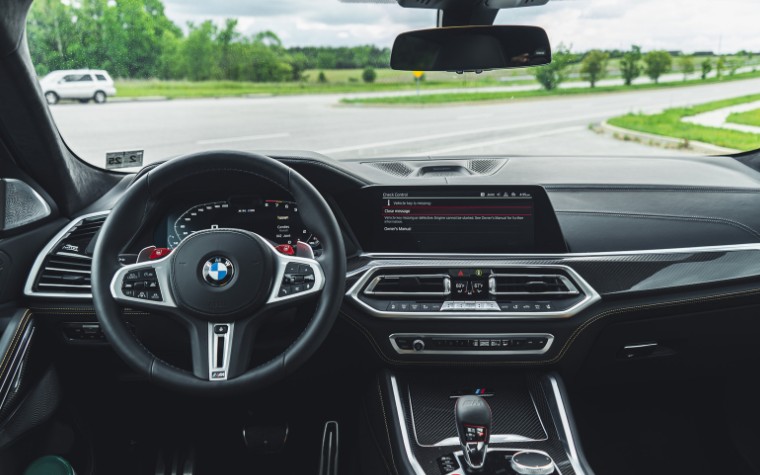Are you wondering what’s the main benefit of driving a four-wheel-drive vehicle?
When I was shopping for a new vehicle here in the UK, one of the biggest decisions I faced was choosing between two-wheel drive (2WD) and four-wheel drive (4WD). I used to think 4WD was only useful if I lived on a farm or took my car off-road regularly.
But after experiencing one particularly icy winter in Northumberland — and getting stuck on a sloping country road — I quickly realised the main benefit of four-wheel drive: traction and control.
In this post, I’ll share everything I’ve learned about four-wheel drive benefits in the UK, when it’s worth investing in, and how it compares to 2WD — especially if you’re dealing with the British climate.
What Does Four-Wheel Drive (4WD) Actually Mean?
Before I bought my first 4WD, I didn’t really understand how it worked — so here’s a quick breakdown that helped me:

What Are The Difference Between 4WD, AWD, and 2WD?
- Two-Wheel Drive (2WD): Power is sent to either the front or rear wheels. It’s more fuel-efficient and works well on standard roads.
- Four-Wheel Drive (4WD): Power is sent to all four wheels, that may be automatically (AMT) or manually. This setup improves grip and performance in tough conditions.
- All-Wheel Drive (AWD): Similar to 4WD but always engaged. It’s more common in SUVs and good for on-road use.
How 4WD Works?
In most 4WD systems, I can choose when to activate the four-wheel drive mode — usually with a switch or button on the dashboard.
Once activated, power is split between all four wheels to give me better grip on slippery, muddy, or steep terrain.
What’s the Main Benefit of Driving a Four-Wheel-Drive Vehicle?
How Is The Improved Traction and Stability?
The biggest benefit I’ve experienced with 4WD is improved traction — especially on wet, icy, or uneven surfaces.
Power being delivered to all four wheels means my car is far less likely to slip, skid, or lose control.
In the UK, where weather can shift from sun to sleet in an hour, this makes a real difference in day-to-day driving.
How Is Confidence in Snow, Rain, and Ice?
I remember a trip through the Peak District at the time of winter. The roads were slick with sleet, and some cars were stuck at the bottom of a hill.
Thanks to my 4WD, I made it up without spinning or sliding once. It gave me a sense of control I’d never had in my old 2WD hatchback.
Is it have Better Performance on Unpredictable Terrain?
In rural areas, or even during festival season when fields turn to mud, 4WD makes driving easier.
Whether it’s gravel roads, wet grass, or off-road trails, four-wheel drive gives me the grip I need to get through safely.
Why Is Traction So Important in UK Driving Conditions?
What are the Common UK Weather Challenges?
If you’ve lived in the UK for a while, you’ll know that rain and wet roads are part of daily life — even in summer.
Add in snow, fog, and mud in rural areas, and suddenly traction becomes more than just a feature — it becomes essential.

How Will be the Country Roads and Hills?
Living near the countryside, I face steep hill starts and single-track roads. With 2WD, I’ve slipped back on inclines, especially in icy weather. But while using 4WD, I feel a bit more secure and in control.
How The Risk in Dangerous Situations are Reduced?
Good traction reduces the risk of:
- Skidding when braking
- Wheel spin during acceleration
- Losing control on bends or slopes
That extra control has made me a more confident driver, particularly when carrying passengers or towing.
How Does Four-Wheel Drive Compare to Two-Wheel Drive?
I’ve driven both, and here’s what I’ve noticed first-hand.
What is the difference in Fuel and Running Costs between Four-Wheel Drive and Two-Wheel Drive?
4WD vehicles tend to be:
- Heavier
- More complex mechanically
- Less fuel-efficient
But the trade-off in safety and control makes it worth it for me — especially since I often travel in winter or to remote areas.
How Is the Seasonal Flexibility?
Many modern 4WD cars let me switch between 2WD and 4WD, which helps manage fuel economy when extra traction isn’t needed.
How Is Four-Wheel Drive vs Two-Wheel Drive – UK Driving Compared?

| Feature | Four-Wheel Drive (4WD) | Two-Wheel Drive (2WD) |
| Traction on slippery roads | Excellent | Limited |
| Fuel efficiency | Lower | Higher |
| Performance in snow/rain | Very reliable | Variable |
| Handling off-road | Designed for it | Poor |
| Towing heavy loads | Great stability | Less control |
| Cost of vehicle | More expensive | Cheaper |
| Best for | Rural, winter, off-road | City driving, mild climates |
Who Actually Needs a Four-Wheel-Drive Vehicle in the UK?
You don’t need 4WD if you only drive short distances in urban areas. But if you face any of the following, it’s worth considering:
Is People Living in Rural or Hilly Areas Needs?
I live just outside town, and my driveway is on a slope. In winter, I’ve seen neighbours struggle to get up it — while my 4WD takes it with no issue.
Is People Frequent Towing or Outdoor Trips Need?
If you’re towing a trailer, horsebox, or caravan, 4WD provides added stability and torque, especially on uneven surfaces.
Is it Need for Family Safety and Year-Round Reliability?
For me, the peace of mind I get knowing my family is safer on icy roads is reason enough to choose 4WD — especially when schools stay open through bad weather!
What are the Key Benefits of Four-Wheel Drive for UK Drivers?
- Superior traction on slippery or loose surfaces
- Better control in adverse weather like snow, rain, and ice
- Easier towing of heavy loads like caravans or horseboxes
- Improved safety for family driving in winter
- Confidence on rural roads, gravel, or muddy terrain
- Switchable modes in latest 4WD cars inorder to save fuel

Final Thoughts – Is Four-Wheel Drive Worth It for Me?
When I weigh everything up, the answer is clear. While four-wheel-drive vehicles may cost more to buy and run, the increased traction, safety, and year-round performance make it a smart investment for anyone facing typical UK road and weather conditions.
For me, the ability to drive confidently in all seasons, on any terrain — whether I’m heading into town or out to the countryside — is worth every penny.
Related Article: Where Would You See a Contraflow Bus Lane?
What Are The FAQ On What’s the Main Benefit of Driving a Four-Wheel-Drive Vehicle?
1. What’s the main benefit of driving a four-wheel-drive vehicle?
The main benefit is traction. By sending power to all four wheels, the car maintains grip and control on slippery roads, off-road tracks, and hilly terrain — especially helpful in unpredictable UK weather.
2. Is four-wheel drive necessary in the UK?
Not for everyone. But if you live outside of urban areas, drive in winter conditions, or tow regularly, four-wheel drive can greatly improve your safety and driving experience.
3. Is AWD the same as 4WD?
No. AWD (All-Wheel Drive) is usually always on, good for tarmac, and often found in cars and crossovers. 4WD is manually activated, better for tough terrain, and more common in SUVs and trucks.
4. Do four-wheel-drive vehicles use more fuel?
Yes. Since they’re heavier and more complex, 4WD vehicles typically consume more fuel than 2WD models — though switchable systems in newer vehicles help mitigate this.
5. What are some disadvantages of 4WD?
- Higher purchase price
- Lower fuel economy
- More expensive to maintain
But for many UK drivers — including me — the safety and stability are worth the extra cost.

Leave a Reply